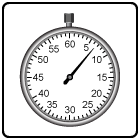


3 scores max per player; No foul language, show respect for other players, etc.
Name | Score | Date | ||
|---|---|---|---|---|
| 1 | ||||
| 2 | ||||
| 3 | ||||
| 4 | ||||
| 5 | ||||
| 6 | ||||
| 7 | ||||
| 8 | ||||
| 9 | ||||
| 10 |
This is a timed game. Your final score is equal to the total score minus time taken.
Game: CHOOSE OR LOSE
Aim: Choose the right answer; beat the clock
Method:
You start the game with 50 points. Each question has 2 to 4 answers. Select the correct answer before your time runs out to score points. Right answers are +10, wrong answers are -2, out of time is -5.
This is a timed game. Your final score is equal to the total score minus time taken.

anonymous 😂😍😂
"Count down in steps of 5 to -100"
CHOOSE OR LOSE game to practice
'Number bonds to 100' for 2nd grade
Addition - Number bonding - Number bonds to 100
Number bonding is a method for recognizing common combinations of numbers that add to a specific target number. In this topic we are looking at pairs of numbers that bond to 100. So, an obvious pair you might think of is:
50 + 50 = 100
Obviously there are many other multiples of 10 that also bond to 100:
40 + 60 = 100
80 + 20 = 100
10 + 90 = 100
One thing you will notice with the multiples of 10 is that we could knock off the final zero and think about number pairs that bond to 10. You will also notice that we can play around with these bonds to derive related facts - for instance:
30 + 70 = 100
100 = 70 + 30
100 - 70 = 30
100 - 30 = 70
Now, let's think about numbers which aern't multiples of 10 like 34 or 59. One way to quickly get their number bond pair to 100 is to work the units first and then figure out the tens. So, for 34, take the unit 4, bond it to 10 with a unit 6. This pushes the tens 3 to a tens 4. Now figure the tens bond of 4 to make 100 which is 6. So the answer is 66.
34 + ▢ = 100
30 + 4 + ▢ + 6 = 100
30 + 4 + 60 + 6 = 100
So, ... 34 + 66 = 100
Consider another example, say 22:
22 + ▢ = 100
20 + 2 + ▢ + 8 = 100
20 + 2 + 70 + 8 = 100
So, ... 22 + 78 = 100
So knowing your number bonds, or knowing how to quickly work out number bonds can massively speed up your mental arithmetic.
With our Choose or lose math game you will be practicing the topic "Number bonds to 100" from 2nd grade / Addition / Number bonding. The math in this game consists of 22 questions that ask you to identify pairs of numbers that sum to a total of 100.

Our CHOOSE OR LOSE game is a simple activity to help elementary math learners and will improve the speed at which you can solve problems in the given topic. It does not rely on the learner typing in the answer. Rather, the learner must choose the correct answer from a list of 2, 3 or 4 similar answers.
CHOOSE OR LOSE encourages faster problem-solving for common and vital elementary math topics. CHOOSE OR LOSE is a timed game with a leaderboard for each topic at each of the 4 levels on offer. You can play the game with or without audio and robots.
UXO * Duck shoot * The frog flies * Pong * Cat and mouse * The beetle and the bee
Rock fall * Four in a row * Sow grow * Choose or lose * Mix and match

Latest leaderboard entries: Choose or lose




How to play Choose or lose to practice
'Number bonds to 100' for 2nd grade

Our CHOOSE OR LOSE game asks the learner to click on the correct answer from a selection of possible answers before the clock runs down.
- Click on PLAY to start.
- You are presented with a topic question, then a list or grid of 2 to 4 possible answers (depending on the topic you have chosen).
- You must select the correct answer by clicking on it before the clock counts down.
- You have 10 seconds in total to answer each question.
- The clock starts ticking down 5 seconds after the answers have appeared.
- To hear the question again, click / tap on the question box.
- The browser will speak the potential answers on rolling-over them.
- A correct answer gains you 10 points.
- A wrong answer loses you 2 points.
- A time-out loses you 5 points.
- A score is kept of correct answers against number of answers.
- The game is timed, and your final score (points earned minus time taken) is given at the end of the game. Top 10 scores for a topic get you a place on the leaderboard.










